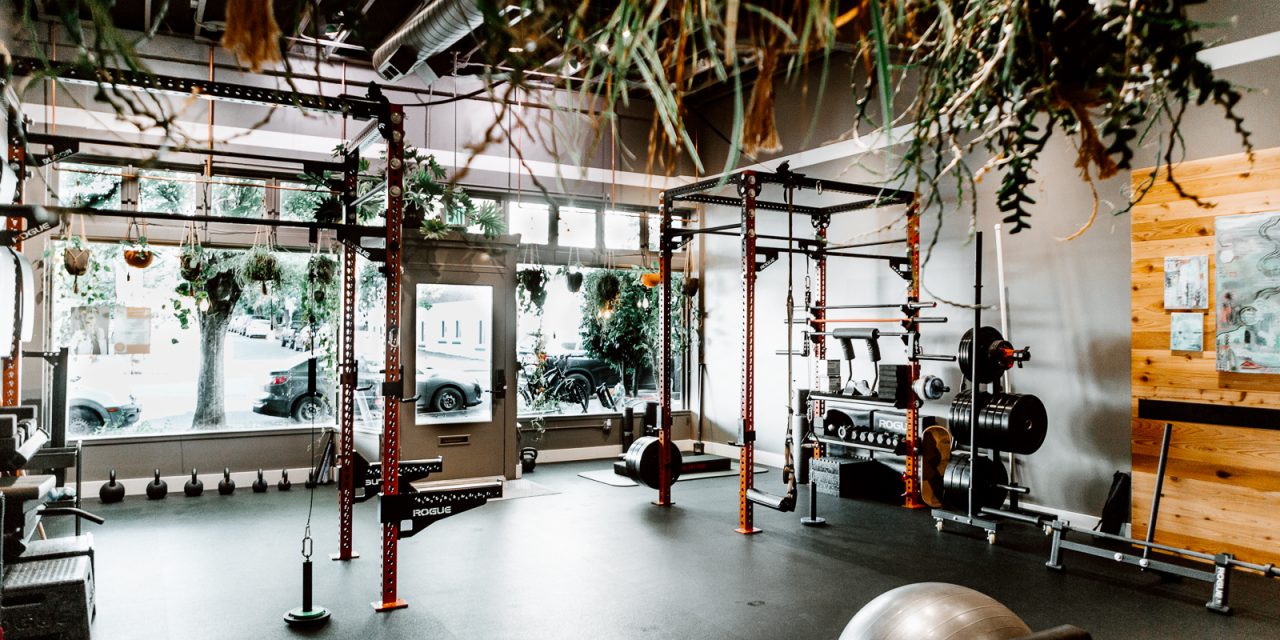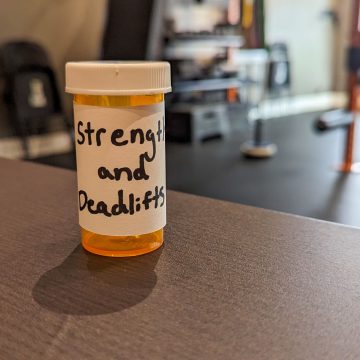A critical idea Move Better embodies and shares with our patients is the belief in the positive impacts that physical strength can have on personal empowerment and its improvements on quality of life. Less commonly understood, however, are the direct effects that being stronger can have on the perception of pain and stiffness in an area of discomfort. What I have observed is that many take their youth for granted and fail to maintain awareness of how much their strength liberates them in their day to day lives. Some also neglect to see the connections between how the decision they make today can accumulate to a potential loss of this strength later on in life. These two factors may facilitate the creation of a vicious cycle of pain, weakness, and altered movement functioning.
I want to tell the story of the man that inspired me to become a Chiropractor. In his younger years he woke up at 6:00 AM with no exceptions and started his day with at least 8 miles of running. He would then go to work at his day job, perform weightlifting training in the afternoon, return home to have dinner with his family, and then worked on-call in the evenings as a paramedic. One night while on a call, he was required to transport a 400lb. patient in cardiac arrest down a flight of stairs. In the midst of this commotion, he unfortunately tore the labrum of his left shoulder. He thought that eventually the injury would heal so he did not receive any conservative care or surgical consultation. The pain continued to persist and progress until the intensity forced him to stop weight training. Once he stopped weight training he started to feel intense pain in his knees while running. He then stopped running altogether as well. Years passed and he continued to feel pain in his knees, his shoulder, and then his neck and lower back also became affected. His pain became so systemic and so paralyzing that he started avoiding all things physically demanding whatsoever. Now as a 67 year old man he cannot walk for longer than around 30 yards without being out of breath and sleeps in the first floor of his house because he cannot walk up the stairs without lowering to his hands and knees to crawl up the stairs. This man is my father.
As I grew from a teenager into an adult I became disheartened and frustrated by watching my father unnecessarily suffer because he was unable to break the vicious cycle that pain can create on strength and daily function. In the clinic we hear a similar story on a regular basis. Usually they present to the clinic concerned about an area of the body that becomes injured or may be experiencing pain. This inevitably subconsciously persuades the patient away from using the area of concern to perform work throughout their daily lives. What they struggle to understand is that if an area of the body is rested for too long, then the region can become weak, which then increases the risk for reinjury and also increases their apprehension and sensitivity to pain. The increased risk for injury and heightened pain sensation leads to more avoidance and the cycle starts to spiral out of control. The way to avoid this potential cycle is to understand what pain even is and that sometimes, pain is an inaccurate message being sent to the brain about an area of concern. Understanding what types of movements should or shouldn’t perform, what amount of physical activity will be beneficial vs. harmful, when to rest the region of pain, and when to reintroduce physical activity can all work together to create the best environment to facilitate improved function/healing.
Excluding the presence of an acute traumatic injury with a direct mechanism to explain the pain, the vast majority of people experiencing musculoskeletal pain have a dysfunctional pain gate control system. Put into simple terms, the experience of pain is not a direct experience.
Let’s create some simple terms:
Brain = Organ in your skull
Mind = The complicated experience of collective consciousness
Pain is only an output of the mind but is built upon your brain’s perception of local sensation within a specific region. These sensations are composed of mechanical strain, pressure, and local chemical alteration. Changes in these sensations send an electrical signal to your spinal cord. Based on the intensity of the signal, the spinal cord will either stop the signal at the level of the spine or allow for the signal to reach the brain. These sensations are sent to the brain and left to mind to formulate an opinion. With chronic and/or non-specific pain, the spinal cord becomes more liberal with what signals are allowed to reach the brain and the mind starts to create a heightened awareness around the signals being sent. This hypersensitivity/awareness can be attributed to numerous causes. Some of the most frequent are previous injury, emotional distress relative to the sensation, and improper load management strategies.
Strength training can be an effective strategy at reducing pain hypersensitivity. We believe this works by making the area that hurts more resilient to injury, teaching the body to work in coordination with many muscles groups through movement to reduce load placed on the are of concern, convincing the mind that the area being used through movement is safe, and changing the patients opinion about what an their body is capable of.
Outside of strengthening/desensitizing specific areas associated with the region of pain, the general attribute of being strong seems to be associated with less prevalence of pain. A systematic review released in 2018 including 22 randomized control studies found that 59.6% of Fibromyalgia patients that performed strength training were able to stop using pain medication to manage their symptoms, compared to only 20% of the patients who were not strength training. Another Meta-Analysis released in 2018 with over 300 subjects included found an average of 40% reduction in pain symptoms amongst chronic low back pain patients who performed regular resistance training. Lastly, a Meta-Analysis released in 2018 with over 2 million subjects found that subjects that had stronger relative grip strength and stronger relative knee extension strength had a 13-14% decreased risk in all cause mortality regardless of age.
Regardless of what is causing the experience of pain in a patient, having clinicians such as ourselves that specialize in movement based medicine can be remarkably beneficial. We can help by prescribing the right dosage of exercise. We can help by evaluating how the pain may be affecting the biomechanics of how you perform movements such as hinging/bracing/breathing/pulling. An examination can assure that the pain generator is not an injury requiring more invasive intervention. We are here to help break the vicious cycle pain can create. The hardships that my father experienced are not an uncommon circumstance we all may endure or watch in our loved ones. That is why all of us at Move Better are fully committed to aiding our patients to avoid a superfluous fate. We do this by empowering them to be powerful.



